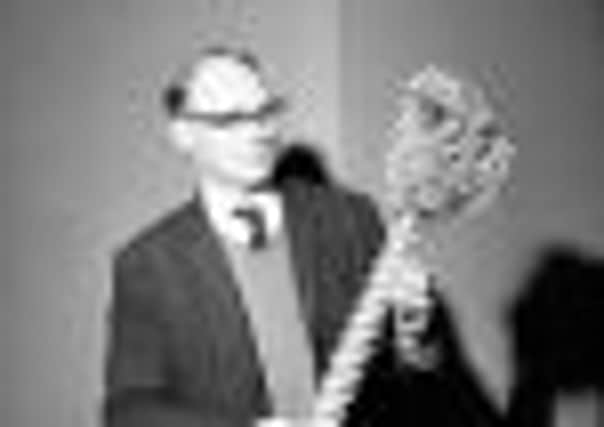Obituary: Prof Alexander Fenton CBE, ethnologist who played a key part in increasing Scotland’s knowledge of its heritage


He may have enjoyed the description of just being a Buchan loon but Professor Emeritus Alexander Fenton CBE was to be commonly recognised in a higher order as a “fell clever loon”.
Thanks to his efforts as a distinguished academic and ethnologist, Scotland has an increased knowledge of its heritage and culture and, if looking for some physical manifestation of his efforts, it could be claimed he was largely responsible for the National Museum of Rural Life at Kittochside, East Kilbride.
Advertisement
Hide AdAdvertisement
Hide AdHis early formative years were spent at Drumblade, Huntly before the family moved to Auchterless where his father, a master shoemaker or soutar, as well as being a crofter, set up shop in an old smiddy.
It was here in this little workshop, with its constant flow of visitors, that Sandy, as he preferred to be called, picked up his love of language and dialect and all matters rural.
He attended the local primary school in Auchterless where he met his future wife, Evelyn, giving rise to the family story he enjoyed. “I was a crofter’s son, she was a fairmer’s daughter.”
His education took him to Turriff Academy and then to Aberdeen University, where, laying a path for his future life he studied English, French and History and incidentally as a master linguist picked up a fluency in German and Norwegian at the same time.
In 1989, he returned to his alma mater to collect an honorary degree which recognised his contribution to the history and culture in Scotland.
History does not record how his Buchan dialect, sustained throughout his life, was received at Cambridge University, where he added to his degrees, studying archaeology, anthropology Tripos.
Sandy started his working life in 1955 as a senior assistant editor on what was the massive project of creating the Scottish National Dictionary but he was soon lured away to become as assistant keeper at the then National Museum of Antiquities.
If that was rather a grand title for a recently established graduate, Sandy would in his self-deprecating way point out his was a department with one employee: himself.
Advertisement
Hide AdAdvertisement
Hide AdAt that time, in the mid-1950s the trustees of the museum realised that a major revolution was taking place in the Scottish countryside. Horsepower, which had ruled for the previous 200 years, was rapidly being overtaken by the tractor. At the same time, hand tools were being discarded with the arrival of electrical and engine-powered machinery. It needed someone to collect and record all the bits and pieces of rural life that were about to be thrown on the scrap heap and Sandy was that man.
As he travelled over the Highlands and Islands gathering and recording information, his approach was simple. “Whit di ye dae wi that?” He may well have known or at least suspected but he wanted to hear, in the owner’s own dialect, what the piece of equipment was and how it was used.
And so a collection of rural artefacts was put together. Unfortunately there was no opportunity to display these at the Queen Street Museum but, not to be put off, Sandy organised temporary displays in premises in Shandwick Place.
It was there that he met Dick Lemmon, then the chief executive of the Royal Highland Society. He was quick to suggest the society would be fulfilling one of the aims of its original charter, education, if it put on a display at the Highland show at its Ingliston showground.
Even though the initial displays were under canvas, they successfully raised public interest in the country life that was slipping away as farming powered into the mechanical and electronic age.
It also raised Sandy’s ambition to have a permanent display building and so he set up the Scottish Country Life Museum Trust which in due course built premises at Ingliston to display the artefacts of a bygone era.
By now in 1985, he had risen to be the director of the National Museum of Antiquities but changes were on the horizon with a link up with the Scottish Museum into the National Museums of Scotland, where he became research director until 1989.
In later years, he derived great satisfaction from seeing many of the bits and pieces he had collected in his travels throughout Scotland form the basis of the National Museum of Rural Life at Kittochside, East Kilbride.
Advertisement
Hide AdAdvertisement
Hide AdIn 1990, he become chair of Scottish Ethnology and director of the School of Scottish Studies at the University of Edinburgh, where he fired the imagination of a generation of students with his knowledge of the links between Scottish culture, its history and the land; the background for his seminal work Scottish Country Life, published in 1976. Latterly he was director of the European Ethnological Research Centre, for which he was also a consultant. This independent research body within the university has in its short life published under the title of The Compendium of Scottish Ethnology a number of major works on Scottish life and society.
The most recent of those volumes was particularly close to Sandy’s heart, being the History of Farming and the Land.
Sandy’s literary output was prodigious, reflecting not only his work in Scotland, but his interest in language and rural life. This included The Food of the Scots (2007); Wirds an’ Wark ’e Seasons Roon on an Aberdeenshire Farm (1987); the Turra Coo (1989); The Various Names of Shetland (1973), and The Northern Isles, Orkney and Shetland (1978).
For good measure he used his linguistic knowledge to translate German poetry into the Buchan dialect. He may have been a Buchan loon but he was also in that understated Scottish expression, a lad o’ pairts.
He is survived by his wife, Evelyn and his daughters, Lesley and Eileen and their families.
ANDREW ARBUCKLE